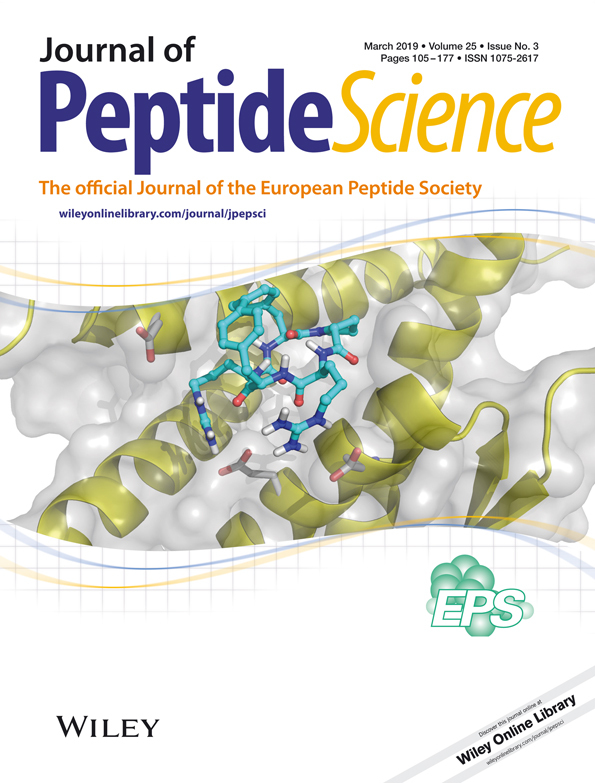Ver ítem
- xmlui.general.dspace_homeCentros e Institutos de InvestigaciónCICVyA. Centro de Investigación en Ciencias Veterinarias y AgronómicasInstituto de BiotecnologíaArtículos científicosxmlui.ArtifactBrowser.ItemViewer.trail
- Inicio
- Centros e Institutos de Investigación
- CICVyA. Centro de Investigación en Ciencias Veterinarias y Agronómicas
- Instituto de Biotecnología
- Artículos científicos
- Ver ítem
An inhibitory mechanism of action of coiled‐coil peptides against type three secretion system from enteropathogenic Escherichia coli
Resumen
Human pathogenic gram‐negative bacteria, such as enteropathogenic Escherichia coli (EPEC), rely on type III secretion systems (T3SS) to translocate virulence factors directly into host cells. The coiled‐coil domains present in the structural proteins of T3SS are conformed by amphipathic alpha‐helical structures that play an important role in the protein‐protein interaction and are essential for the assembly of the translocation complex. To investigate the
[ver mas...]
Human pathogenic gram‐negative bacteria, such as enteropathogenic Escherichia coli (EPEC), rely on type III secretion systems (T3SS) to translocate virulence factors directly into host cells. The coiled‐coil domains present in the structural proteins of T3SS are conformed by amphipathic alpha‐helical structures that play an important role in the protein‐protein interaction and are essential for the assembly of the translocation complex. To investigate the inhibitory capacity of these domains on the T3SS of EPEC, we synthesized peptides between 7 and 34 amino acids based on the coiled‐coil domains of proteins that make up this secretion system. This analysis was performed through in vitro hemolysis assays by assessing the reduction of T3SS‐dependent red blood cell lysis in the presence of the synthesized peptides. After confirming its inhibitory capacity, we performed molecular modeling assays using combined techniques, docking‐molecular dynamic simulations, and quantum‐mechanic calculations of the various peptide‐protein complexes, to improve the affinity of the peptides to the target proteins selected from T3SS. These techniques allowed us to demonstrate that the peptides with greater inhibitory activity, directed against the coiled‐coil domain of the C‐terminal region of EspA, present favorable hydrophobic and hydrogen bond molecular interactions. Particularly, the hydrogen bond component is responsible for the stabilization of the peptide‐protein complex. This study demonstrates that compounds targeting T3SS from pathogenic bacteria can indeed inhibit bacterial infection by presenting a higher specificity than broad‐spectrum antibiotics. In turn, these peptides could be taken as initial structures to design and synthesize new compounds that mimic their inhibitory pharmacophoric pattern.
[Cerrar]

Autor
Larzabal, Mariano;
Baldoni, Hector A.;
Suvire, Fernando D.;
Curto, Lucrecia M.;
Gomez, Gabriela E.;
Marques Da Silva, Wanderson;
Giudicessi, Silvana L.;
Camperi, Silvia A.;
Delfino, Jose M.;
Cataldi, Angel Adrian;
Enriz, Daniel;
Fuente
Journal of Peptide Science 25 (3) : e3149 (Marzo 2019)
Fecha
2019-03
Editorial
Wiley
ISSN
1099-1387
Formato
pdf
Tipo de documento
artículo
Palabras Claves
Derechos de acceso
Restringido
 Excepto donde se diga explicitamente, este item se publica bajo la siguiente descripción: Creative Commons Attribution-NonCommercial-ShareAlike 2.5 Unported (CC BY-NC-SA 2.5)
Excepto donde se diga explicitamente, este item se publica bajo la siguiente descripción: Creative Commons Attribution-NonCommercial-ShareAlike 2.5 Unported (CC BY-NC-SA 2.5)

